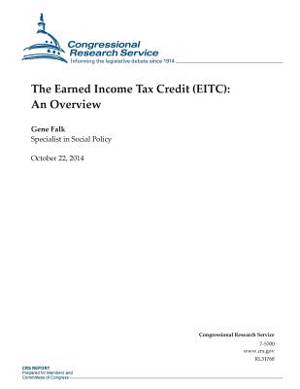
- Retrait gratuit dans votre magasin Club
- 7.000.000 titres dans notre catalogue
- Payer en toute sécurité
- Toujours un magasin près de chez vous
- Retrait gratuit dans votre magasin Club
- 7.000.000 titres dans notre catalogue
- Payer en toute sécurité
- Toujours un magasin près de chez vous
Description
The Earned Income Tax Credit (EITC or EIC) began in 1975 as a temporary program to return a portion of the Social Security tax paid by lower-income taxpayers (the credit was, and remains, calculated as a percentage of earned income, with no direct link to Social Security taxes paid by the tax filer), and was made permanent in 1978. In the 1990s, the program became a major component of federal efforts to reduce poverty, and is now the largest need-tested, anti-poverty cash entitlement program. Childless adults in 2011 (the latest year for which data are available) received an average EITC of $264, families with one child received an average EITC of $2,199, families with two children received an average EITC of $3,469, and families with three or more children received an average EITC of $3,750. A low-income worker must file an annual income tax return to receive the EITC and meet certain requirements for income and age. A tax filer cannot be a dependent of another tax filer and must be a resident of the United States unless overseas because of military duty. The EITC is based on income and whether the tax filer has a qualifying child. The EITC interacts with several nonrefundable federal tax credits to the extent lower-income workers can use the credits to reduce tax liability before the EITC. Income from the credit is not used to determine eligibility or benefits for need-tested programs. The maximum earned income amounts, phase-out income levels, disqualifying investment income level, and maximum credit amounts are adjusted annually to reflect inflation. The actual amount of the credit a tax filer receives is determined by the tax filer's earned income and number of qualifying children using these inflation adjusted parameters.
Spécifications
Parties prenantes
- Auteur(s) :
- Editeur:
Contenu
- Nombre de pages :
- 30
- Langue:
- Anglais
- Collection :
Caractéristiques
- EAN:
- 9781503006409
- Date de parution :
- 22-10-14
- Format:
- Livre broché
- Format numérique:
- Trade paperback (VS)
- Dimensions :
- 216 mm x 280 mm
- Poids :
- 95 g







